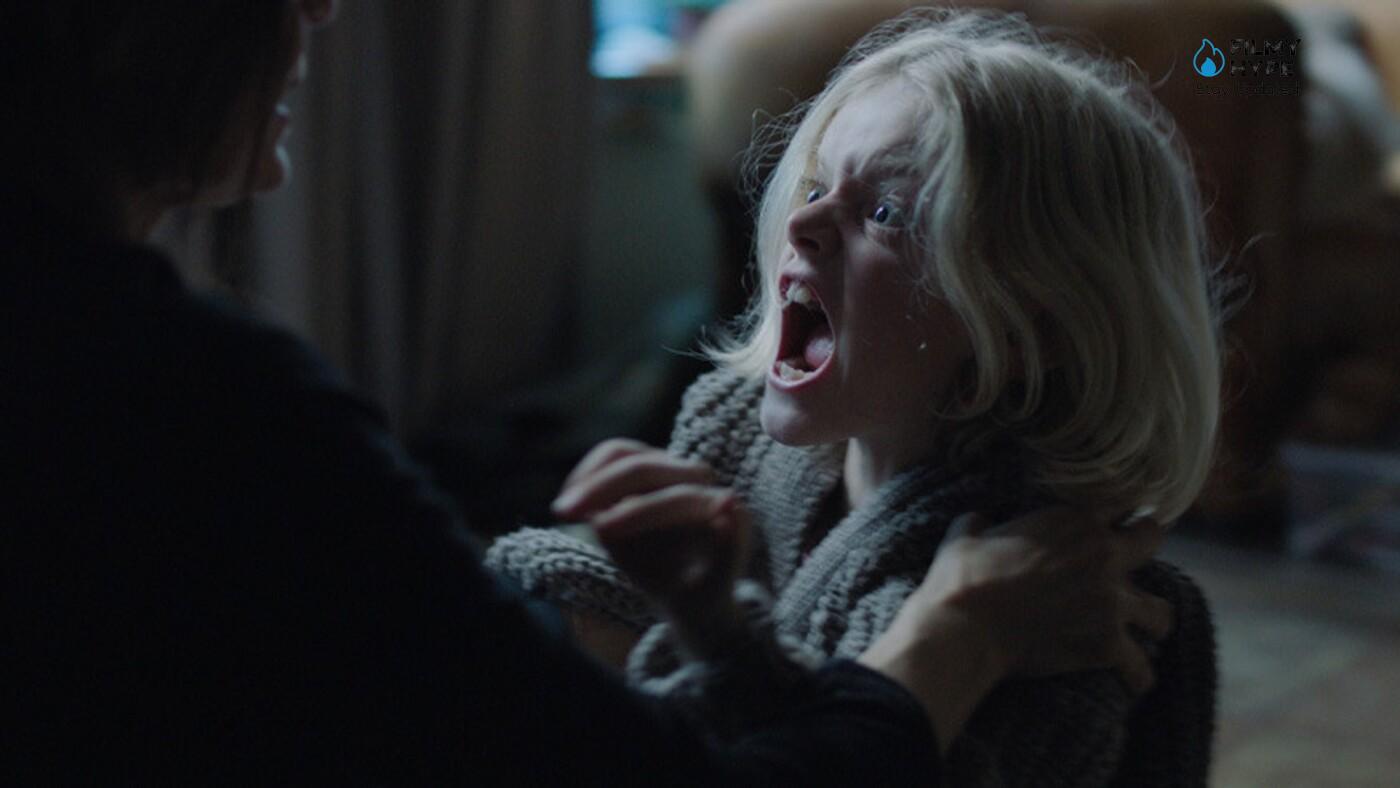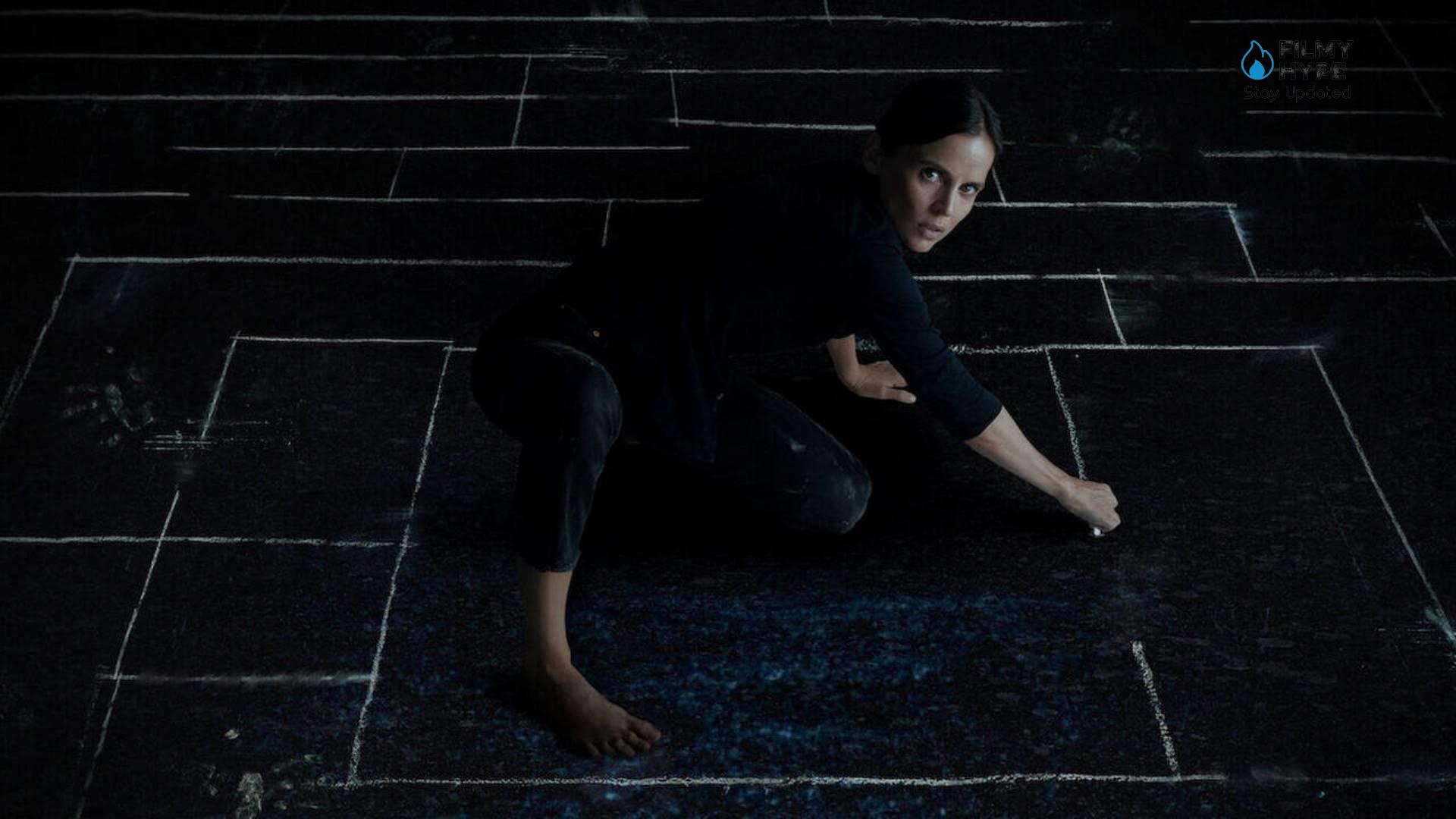The Chalk Line (Jaula) Ending Explained: How Do Chalk Paths Work? How Does Paula Discover Eduardo?
Maternity! What would terror be without her? From Psycho to Hereditary, from Rosemary’s Baby to Good Night Mommy, the relationship between mothers and children has been embroidered in a thousand and one ways in the genre. The Chalk Line (Jaula), the debut feature film by Spanish director Ignacio Tatay, is a new approach to the subject. The film comes from the hand of an important production company: Pokeepsie Films, by Álex de la Iglesia (The day of the beast, The witches of Zugarrimundi) and Carolina Bang (Sad trumpet ballad). In addition, it stars Elena Anaya, who in 2012 surprised the world with her performance in The Skin I Live In. That is why it is not surprising that it generated a certain expectation. But what is this tale about?

The Chalk Line (Jaula): Summary
Paula (Elena Anaya) and Simon (Pablo Molinero) are a couple who have been trying unsuccessfully for several years to have a baby. One evening, returning home via a dark country road, they meet a little girl (Eva Tennear) who walks barefoot and completely alone. After she fainted from shock and was rushed to the hospital, the little girl was discovered to be in extremely critical health. Furthermore, the child does not appear to be able to speak and therefore she cannot provide any indications as to who her parents are. The only ones with whom the little girl, whom the doctors deduce is called Clara, manages to establish contact are just Simon and Paula, in particular, the latter manages to calm her right away and make her feel at ease with her. For this reason, the doctors,
Clara, to feel at ease, must enclose her movements in limited areas: to help her, Paula and Simon then draw lines on the floors with chalk, widening more and more – as she gains confidence – her possibilities of movement. After a few days, the child will be able to pronounce a few words, whispered, in German, thus revealing that one of her parents could come from that country. The mystery that surrounds her, however, becomes more and more intricate when Clara suddenly disappears, plunging Paula into total despair: has she gone away alone or has someone kidnapped her? The solution to the riddle could be much closer, and more disturbing than Paula and Simon could ever have imagined.
Paula (Anaya) and her husband (Pablo Molinero) find a lonely and confused girl (Eva Tennear), who is mute, on the road. Two weeks later, after learning that no one claimed her and due to her adaptability problems in the hospital, the couple gave her temporary shelter. This decision will forever change the lives of the three. The film is slow at first and sins of betting everything on a resolution that is not very credible or, shall we say, abruptly managed. Or, as it reads in Decider, not very coherent. However, the production has many interesting things, such as the use of chalk as a plot engine. What seems to be the beginning of a supernatural plot ends with a clever rationale. Precisely, if you have already seen the film, you will probably have several pending questions due to that radical change that Isabel Peña and Tatay himself exposed in the script, in the last stage of production. Here we are going to answer those concerns, but not without first warning the unsuspecting reader that spoilers are coming.
The Chalk Line Ending Explained: How Do Chalk Paths Work?
Paula and Simón (Pablo Milonero) try to get Clara (Eva Tennear) better by taking her home. The little girl, however, still does not speak and is unable to move beyond a small square drawn on the floor. Paula then uses the chalk to create larger imaginary spaces or paths to the rest of the home. Somehow (we’ll find out why later), the girl only feels safe following those lines marked on the floor.

In this context, Paula begins by establishing a small space that she later expands so that Clara feels comfortable. As explained in the film, the girl is not mute, she simply does not understand the Spanish language. In addition, it is difficult for her to communicate because she has suffered trauma and that trauma is associated with her kidnapping and the murder of her mother, at the hands of her neighbour, Eduardo Olivares (Carlos Santos). We will understand this later.
Does Paula Suffer From Mental Health Problems?
Paula plays from the beginning with Paula’s possible problems associated with frustrated motherhood. That is why she regularly injects herself, in an attempt to get pregnant, at the same time, once Clara enters the life of the couple, she acts more like a mother than an adult interested in the girl overcoming her trauma, socializing and coming back to speak. The script is clever enough for viewers to believe that there is indeed a mental deterioration and that Paula has become obsessed with Clara, to the point that she is not able to accept the obvious: that the girl has some psychopathy that leads her to put glass in the food so that a pregnant woman and Paula herself are victims of cuts to the mouth and throat. However, much later, through a flashback we are shown that it was not the girl but the criminal, Eduardo, who planned everything; he was the one who killed Clara’s mom and taught the girl to move only in the confined spaces with chalk. Also, he put the glass in the food.
How Does Paula Discover Eduardo?
It is precisely Paula’s maternal instinct that pushes her to discover the truth. First, she doesn’t think Clara is capable of putting glass in food. She always tries to understand the little girl when she has outbursts of rage. This is how she, looking for a rational explanation for everything that has happened, takes a police file home. Among other things, Paula discovers that years ago a young woman had been physically and sexually assaulted. Among the objects of the investigation found at the crime scene, there were paper designs equal to the ones that Clara gives her and that looked like little angels. The protagonist understands that there must be some kind of relationship between this aggression and the little girl, so she interviews the doctor who had performed the autopsy on the young woman. The galena informs him that the victim had a lazy eye, which means that one eye was weaker than the other.
Paula continues reviewing the cases of the file that was stolen and finds that a young German woman, with a patch over one eye, had been kidnapped on a beach in Malaga about ten years ago and was still missing. With this information, she returns home and sees the drawing that Clara had shown her several times and only then does she understand that the drawing coincides with the point of view from the window that she faces toward Eduardo’s house. The murderer himself greets her at that moment. This is where everything fits perfectly: the little girl had been warning Paula all this time about the Bogeyman, as the urban legend of the Bogeyman is called and as by extension child kidnappers are called.
What Had Eduardo Done And Why Did He Leave Clara On The Road?
According to the files stolen by Paula, a German girl had disappeared in 2012 but was kidnapped by Eduardo, who had sexually assaulted her and eventually impregnated her. Once she gives birth, the young Ella is killed in 2017. The little girl that was born is none other than Clara. Now, there is something that can confuse the audience. In one scene Eduardo leaves Clara on the road and tells her to follow The Chalk Line, which is the marking that divides the road. Why does the criminal do that? Well, simply because there was a police checkpoint. The criminal likely believed that he could later find her, but that is when Paula and Simón enter the scene, a scene that we saw at the beginning of the film.
How Does Eduardo Get Clara Back?
As in The Usual Suspects, Isabel Peña and Ignacio Tatay have a surprise in store in the script: the murderer has always been in sight since he is part of Paula’s group of friends. That is why during a meal, we see how the raptor puts glass in the jam and other foods that were presumably part of Clara’s diet. It is likely that the psychopath played, desperately, for the option that the girl could die by ingesting the sharp pieces. But Eduardo had already tried to kidnap Clara from Paula and Simon’s house. In another flashback, they show it. He failed at the first but succeeded at the second. The clue that the girl leaves with her drawing is what allows the protagonist to conclude that her neighbour is the kidnapper and therefore informs the police about such suspicion.
How Do The Police Discover That Eduardo Is Lying?
One of the film’s flaws is that by betting on a shocking ending, everything is resolved very quickly, and some important details overlap. For example: was Eduardo’s wife an accomplice? How does Clara escape? How do the police conclude that Eduardo is guilty of Clara’s kidnapping? Let’s answer all those questions calmly. First, Paula, without much protective instinct, for wanting to rescue Clara at all costs, goes to Eduardo’s house. She there she is reduced and cloistered in the basement where she is also the little one. Two officers, warned by the protagonist’s call before these events, arrive at the residence. Apparently, they drop the case after the killer’s explanations.
However, Eduardo must go out to get the file that Paul had stolen and that must disappear so that there is no evidence of his crimes. During her absence, the would-be mother throws some chalk at the girl, which she conveniently carries with her, and invites Clara to leave her safe space and chart her own path out of the basement. When Eduardo returns, he goes down to the basement and looks for Clara. We then realize that Paula’s strategy worked and the girl manages to escape by locking the criminal, closing door from the outside. The girl leaves the house and sees that Simon is on the phone, but the adult does not listen to her. At that moment, Maite (Eva Llorach) appears, silences the infant and takes her back to her kidnapper.
Why doesn’t Maite tell Simón everything? It seems that instantly understanding the situation, he moves the option to use these events to travel and see his children again. It is obvious that she is afraid of Eduardo and so she finds an advantage to at least escape from his supervision. However, these plans are quickly foiled as special forces break in to retrieve Clara and Paula. If the agents had left, convinced by Eduardo, why do these agents suddenly appear? The explanation is that Simón had noticed that his wife and his girl had disappeared and insisted on a new search. At the same time, Maite did not notice that by dragging Clara, the girl had left traces of chalk on the front door, a clue that any authority would have followed. In this way the cycle is closed: the tool that the psychopath had used to keep the girl at bay ended up playing against her.

